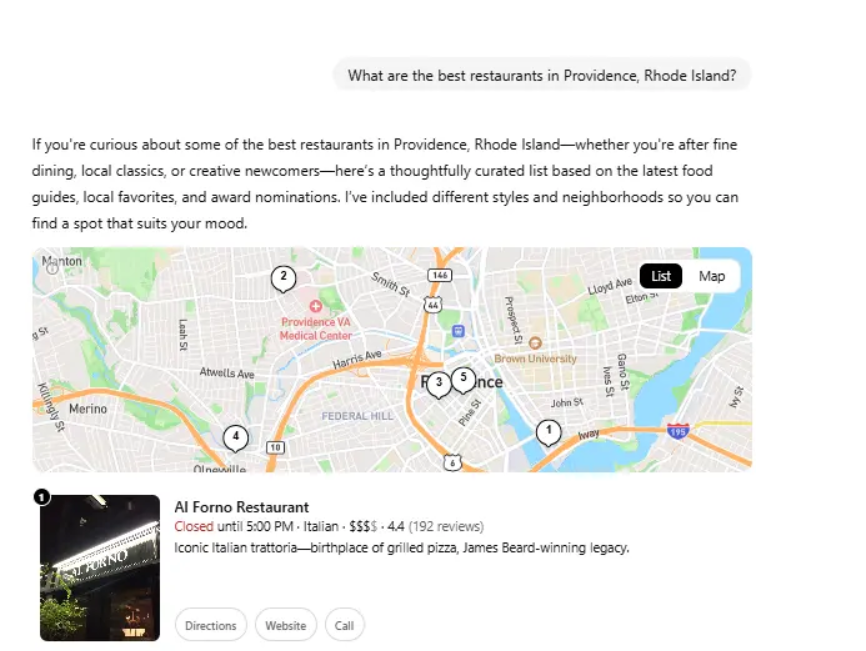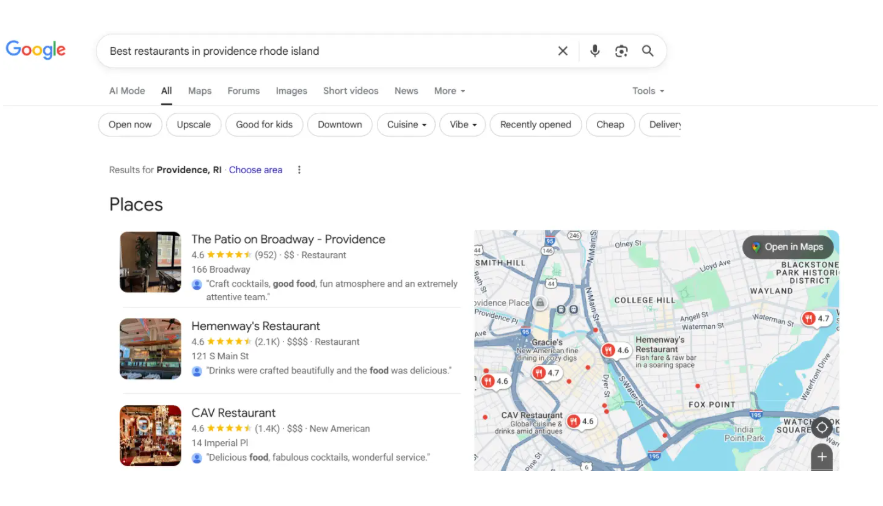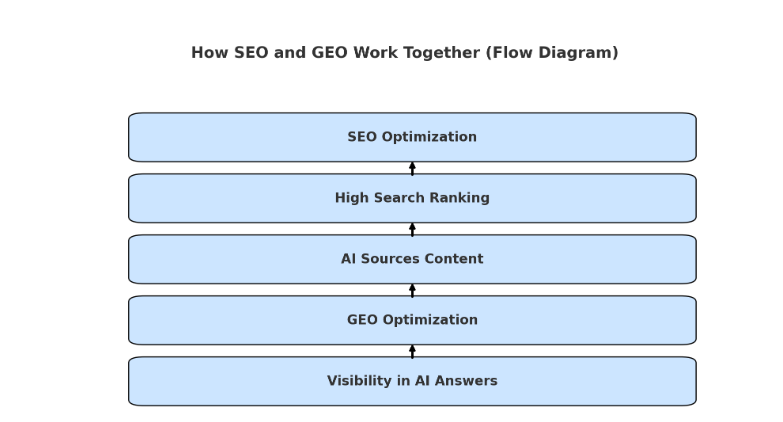With the rise of Generative Engine Optimization (GEO), marketers are no longer just optimizing for search engines. They now have to think about how content appears within AI-generated responses. Platforms powered by generative AI are changing the way people discover information, and your brand needs to adapt.
That doesn’t mean SEO is irrelevant. On the contrary, SEO remains critical for ranking in traditional search engine results. What’s changing is that GEO demands a parallel strategy — one that ensures your content is trusted, cited, and featured by AI tools when they deliver answers.
GEO Explained: What is Generative Engine Optimization?
Generative Engine Optimization (GEO) is the practice of optimizing your content so it appears inside AI-generated answers provided by tools like ChatGPT, Google AI Overviews, Bing Copilot, and Perplexity. Unlike traditional SEO, where the goal is to rank on search engine results pages (SERPs), GEO focuses on ensuring your brand is recognized, cited, and referenced when AI systems generate responses for users.
Why does this matter? Because user behavior is shifting. More people are skipping search engines and asking AI tools directly for advice, product recommendations, and answers. If your content isn’t optimized for these platforms, your brand risks being invisible in the spaces where decisions are now being made.

Example of GEO
To succeed with GEO, businesses need to:
Create authoritative content backed by data, expertise, and unique insights.
Structure content clearly so AI systems can easily identify and extract relevant information.
Use citations, statistics, and trusted sources, increasing the chance of being surfaced in AI-generated summaries.
Focus on user intent, answering questions in a way that is conversational and comprehensive, just like an AI would deliver.
In simple terms: SEO helps you get found on Google. GEO helps you get found in AI. Both are essential for staying visible in today’s digital landscape.
SEO Explained: The Foundation of Online Visibility
Search Engine Optimization (SEO) is the practice of improving your website and content so it ranks higher on search engine results pages (SERPs) like Google or Bing. For nearly two decades, SEO has been the backbone of digital marketing, helping businesses attract organic traffic, generate leads, and establish credibility online.

Example of a SEO result
At its core, SEO is about making your website discoverable, relevant, and trustworthy to both search engines and users. It involves a mix of strategies, including:
On-page optimization – Using the right keywords, headings, and structured content so search engines understand what your page is about.
Technical SEO – Improving site speed, mobile responsiveness, indexing, and crawlability to ensure your site is accessible.
Content quality – Publishing valuable, authoritative, and user-focused content that satisfies search intent.
Backlinks & authority – Building credibility by earning links from reputable, relevant websites.
Why is SEO still essential in the age of AI? Because billions of searches happen on Google every day, and ranking in search results remains one of the most reliable ways to drive consistent, long-term traffic. While GEO is about visibility in AI-driven answers, SEO continues to be the foundation of digital visibility.
In short: SEO puts your brand on the map in search. GEO ensures you stay visible in the AI-driven future.
GEO vs SEO: A Comprehensive Comparison
| Factor | 🔍 SEO (Search Engine Optimization) | 🤖 GEO (Generative Engine Optimization) |
|---|---|---|
| 1. Definition | Optimizing content to rank higher in search engine results (Google, Bing). | Optimizing content to appear in AI-generated answers (ChatGPT, Perplexity, Google AI Overviews). |
| 2. Primary Goal | Drive organic traffic to websites through SERPs. | Ensure brand visibility inside AI responses and summaries. |
| 3. Platforms | Google, Bing, Yahoo, and other search engines. | ChatGPT, Perplexity, Bing Copilot, Google AI Overviews, and other AI platforms. |
| 4. Ranking Factors | Keywords, backlinks, site structure, user experience, authority. | Content trustworthiness, clarity, structured data, citations, and source reliability. |
| 5. Content Focus | Keyword optimization, long-form blogs, technical SEO elements. | Conversational, fact-checked, evidence-backed content tailored for AI answers. |
| 6. User Behavior | Users type queries and browse multiple search results. | Users ask questions and rely on a single summarized AI response. |
| 7. Metrics for Success | SERP rankings, organic traffic, click-through rate (CTR), dwell time. | Mentions in AI answers, citations, visibility in generative outputs. |
| 8. Competition | Competing against websites in the same keyword niche. | Competing for presence within AI’s training sources and trusted content pools. |
| 9. Longevity | A long-term strategy with cumulative growth. | Rapidly evolving, tied to advancements in AI. |
| 10. Business Impact | Builds consistent web traffic, leads, and conversions over time. | Positions brand as a trusted authority within AI-driven decision-making. |
The Shared Foundation of SEO and GEO
Even though SEO and GEO work in different spaces, their core principles overlap. Success in both depends on building content that is useful, credible, and user-centered. Here are six foundations they share:
Quality Content: Both require original, well-researched, and valuable information that directly addresses user needs.
Authority & Expertise: Content must demonstrate knowledge, backed by industry insights, case studies, or expert opinions.
Trustworthiness: Proper citations, reliable data, and transparent sources help establish credibility for both search engines and AI models.
Clear Structure: Organized headings, concise answers, and easy-to-scan formatting improve visibility in SERPs and AI summaries alike.
User-First Approach: Whether optimizing for Google or AI, content that solves real problems and matches search intent always wins.
E-E-A-T Alignment: Both SEO and GEO reward content that shows Experience, Expertise, Authoritativeness, and Trustworthiness, making it more likely to be ranked by Google or cited by AI systems.
Ultimately, the line between SEO and GEO may be new, but their foundation remains the same: creating content that delivers genuine value to users.
GEO vs SEO: The Differences
Although SEO and GEO share the same foundation, their approach and outcomes differ in several key ways:
Search vs. Answers: SEO targets rankings on search engine results pages, while GEO focuses on appearing in AI-generated answers.
User Journey: SEO relies on users browsing multiple links, whereas GEO meets users directly in summarized, conversational responses.
Optimization Focus: SEO emphasizes keywords, backlinks, and technical site performance. GEO prioritizes credibility, structured content, and cited sources.
Traffic vs. Presence: SEO drives organic website traffic, while GEO builds brand visibility within AI-powered platforms.
Competition: In SEO, you compete with other websites for keyword rankings; in GEO, you compete for recognition in AI’s trusted content pool.
SEO wins visibility on search engines, while GEO secures your brand’s place in AI-driven answers — and mastering both is the key to staying competitive.
How SEO and GEO Work Together – Flow Example
SEO → Visibility in Search → AI Sources Content → GEO → Visibility in AI Answers

Frequently Asked Questions (FAQs)
1. What is the main difference between SEO and GEO?
SEO focuses on ranking content in search engine results, while GEO ensures your content appears in AI-generated answers.
2. Is GEO replacing SEO?
No. GEO does not replace SEO. Instead, they complement each other. SEO builds visibility in search engines, while GEO builds visibility in AI-driven responses.
3. Why is GEO important now?
With more people turning to AI platforms like ChatGPT, Perplexity, and Google AI Overviews for answers, GEO helps ensure your brand is part of those conversations.
4. Do I still need SEO if I focus on GEO?
Yes. Strong SEO remains the foundation because AI systems often pull information from high-ranking search results.
5. How do I optimize content for GEO?
Use structured headings, credible citations, clear answers, and authoritative insights to make your content AI-friendly.
6. What type of businesses benefit most from GEO?
Any business that relies on content marketing, thought leadership, or online visibility can benefit, especially those in competitive niches.
7. Are the ranking factors for GEO the same as SEO?
Not exactly. SEO focuses more on keywords, backlinks, and technical performance, while GEO emphasizes trust, clarity, structured data, and credibility.
8. How can I measure GEO success?
Track whether your content is cited or referenced in AI-generated responses, alongside traditional SEO metrics like rankings and traffic.
9. Is GEO a long-term strategy or just a trend?
GEO is emerging, but it’s tied to the rapid growth of AI in search. It’s expected to become a long-term part of digital marketing.
10. Should I invest in both SEO and GEO?
Yes. Investing in both ensures your content is visible in search engines today and AI-driven answers tomorrow, maximizing your reach.

